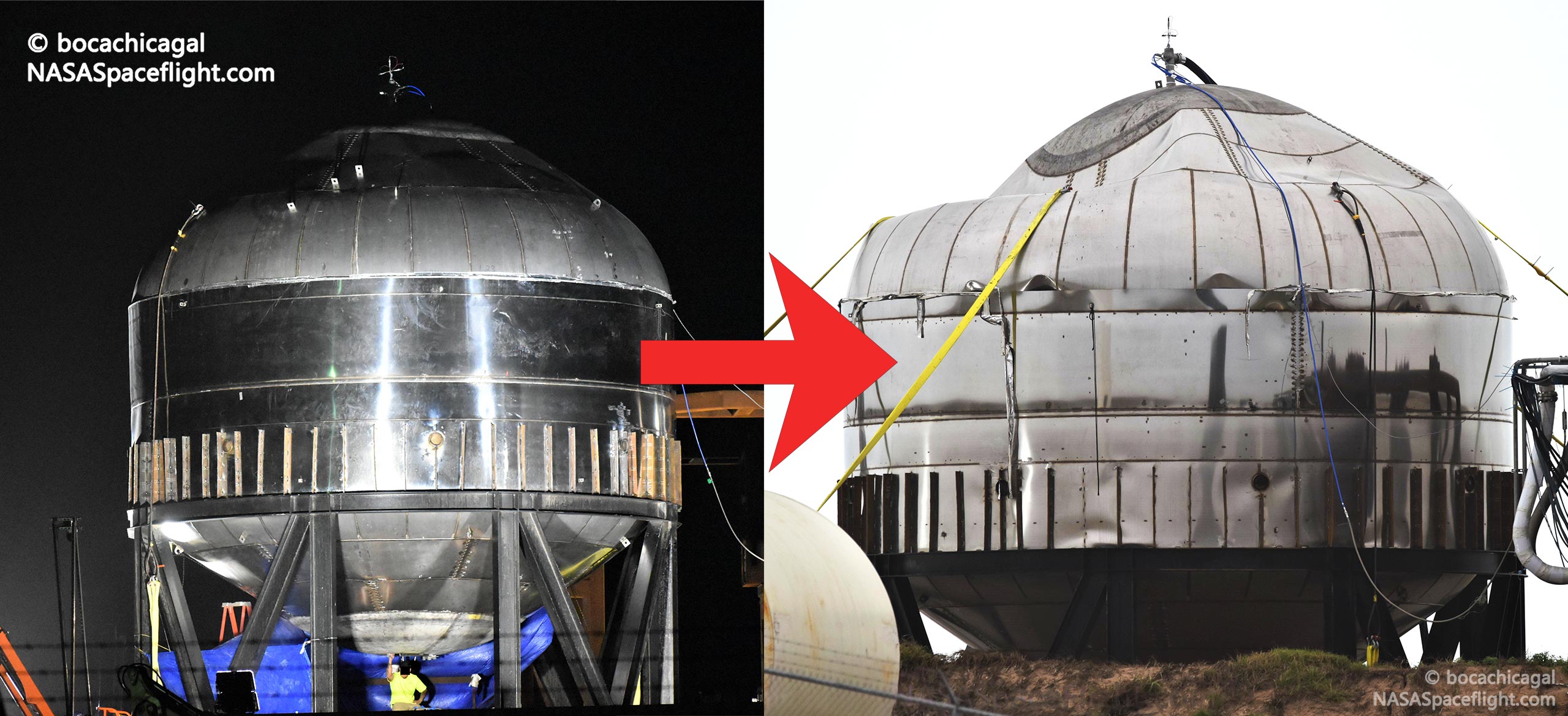
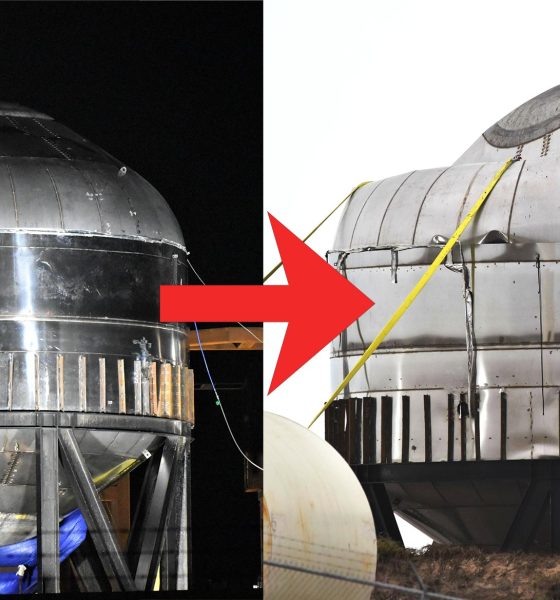
News
SpaceX just blew up a Starship tank on purpose and Elon Musk says the results are in
Before dawn on January 10th, SpaceX technicians and engineers intentionally blew up a miniature Starship tank in order to test recently-upgraded manufacturing and assembly methods, likely to be used to build the first Starships bound for flight tests and orbit.
SpaceX CEO Elon Musk quickly weighed in on Twitter later the same day, revealing some crucial details about the Starship tank test and effectively confirming that it was a success. While somewhat unintuitive, this is the second time SpaceX has intentionally destroyed largely completed Starship hardware in order to determine the limits of the company’s current methods of production and assembly.
Most notably, on November 20th, SpaceX is believed to have intentionally overpressurized the Starship Mk1 prototype in a very similar – albeit larger-scale – test, destroying the vehicle and sending its top tank dome flying hundreds of feet into the air. It’s generally believed that SpaceX (or perhaps even just Musk) decided that Starship Mk1 was not fit to fly, leading the company to switch gears and deem the prototype a “manufacturing pathfinder” rather than the first Starship to fly – which Musk had explicitly stated just a few months prior.
Bopper (Baby StarPopper) this morning after the overpressure event at SpaceX Boca Chica. ??@NASASpaceflight https://t.co/nCG7E9XtKM pic.twitter.com/PRTDQvvlRh— Mary (@BocaChicaGal) January 10, 2020
Dome to barrel weld made it to 7.1 bar, which is pretty good as ~6 bar is needed for orbital flight. With more precise parts & better welding conditions, we should reach ~8.5 bar, which is the 1.4 factor of safety needed for crewed flight.— Buff Mage (@elonmusk) January 10, 2020
Instead, Starship Mk1 suffered irreparable damage during its pressurization test and was rapidly scrapped in the weeks following, although several segments were thankfully salvaged – perhaps for use on future prototypes. Along those lines, it can arguably be said that the results from the mini Starship tank’s Jan. 10 pop test have paved the way for SpaceX to build the first truly flightworthy Starship prototypes – potentially all the way up to the first spaceworthy vehicles.
Hours after the test, Musk revealed that the Starship test tank failed almost exactly where and how SpaceX expected it would, bursting when the weld joining the upper dome and tank wall failed. Critically, the tank reached a maximum sustained pressure of 7.1 bar (103 psi), some 18% over the operating pressure (6 bar/87 psi) Musk says Starship prototypes will need to be declared fully capable of orbital test flights. In other words, given the tank’s size, it survived an incredible ~20,000 metric tons (45 million lbf) of force spread out over its surface area, equivalent to about 20% the weight of an entire US Navy aircraft carrier.
Musk also revealed that SpaceX will require Starships to survive a minimum of 140% of that operating pressure before the company will allow the spacecraft to launch humans.
Some have less than generously taken to smugly noting that several modern spaceflight and engineering standards require that launch vehicle tankage be rated to survive no less than 125% of their operating pressure, while this test tank would be rated for less than 118% under identical conditions. However, this ignores several significant points of interest. First and foremost, the Starship test tank intentionally destroyed on January 10th was assembled from almost nothing – going from first weld to a completed pressurization test – in less than three weeks (20 days).
Second, all visible welding and assembly work was performed outside in the South Texas elements with only a minor degree of protection from the coastal winds and environment. Although some obvious tweaks were made to the specific methods used to assembly the prototype tank, it also appears that most of the welding was done by hand. For the most part, in other words, the methods used to build this improved test article were largely unchanged compared to Starship Mk1, which is believed to have failed around 3-5 bar (40-75 psi).
Additionally, it appears that almost all aspects of this test tank have smaller structural margins, meaning that the tank walls and domes are likely using steel stock that is substantially thinner than what was used on Starship Mk1. Nevertheless, thanks to the addition of continuous (single-weld) steel rings, a tweaked dome layout, and slightly refined welding, this test tank has performed anywhere from 20% to 200+% better than Starship Mk1 – again, all while coming together from scratch in a period of less than three weeks.
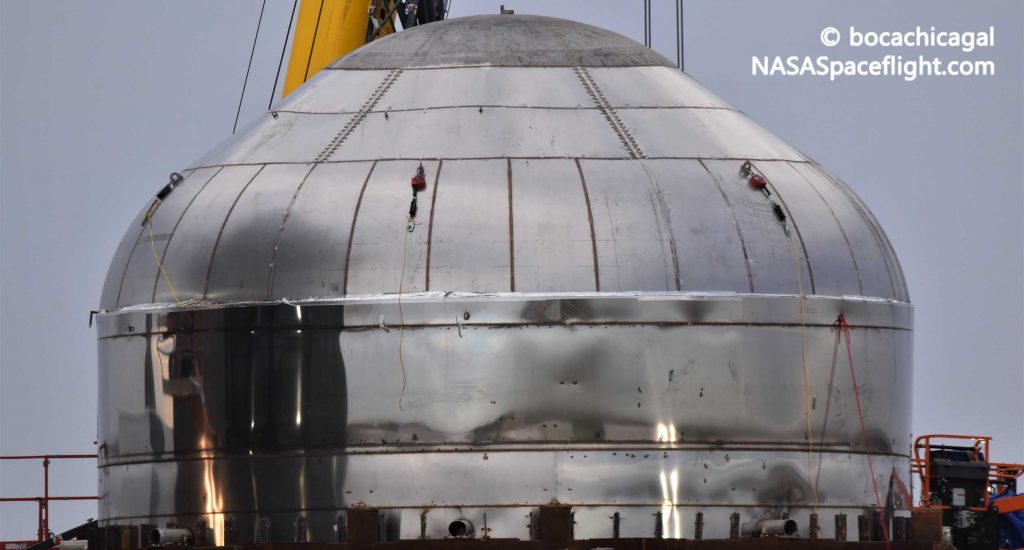
As Musk notes, with relatively minor improvements to welding conditions and the manufacturing precision of Starship rings and domes, SpaceX can likely ensure that Starships (and thus Super Heavy boosters) will be able to survive pressures greater than 8.5 bar (125 psi), thus guaranteeing a safety margin of at least 40%. Even a minor improvement of ~6% would give vehicles a safety margin of 125%, enough – in the eyes of engineering standards committees – to reasonably certify Starships for orbital test flights.
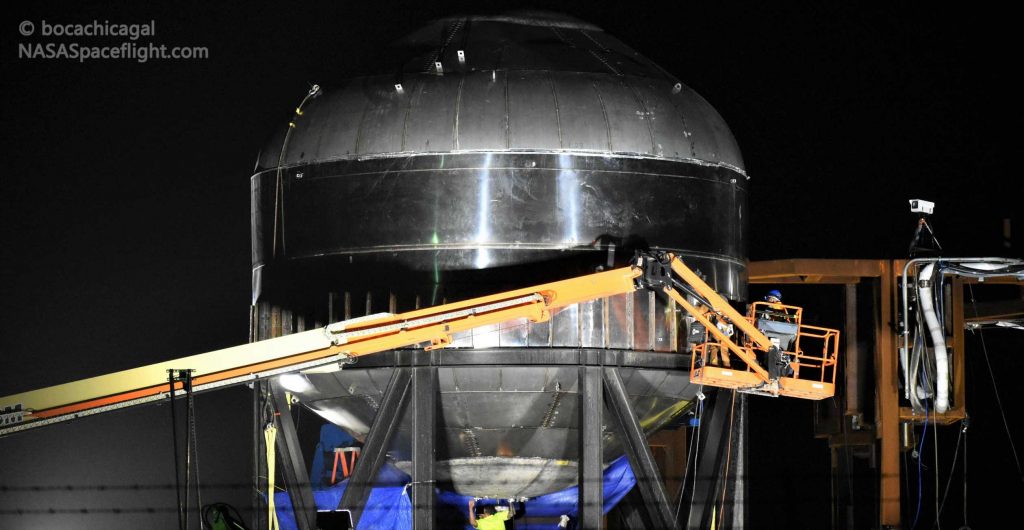
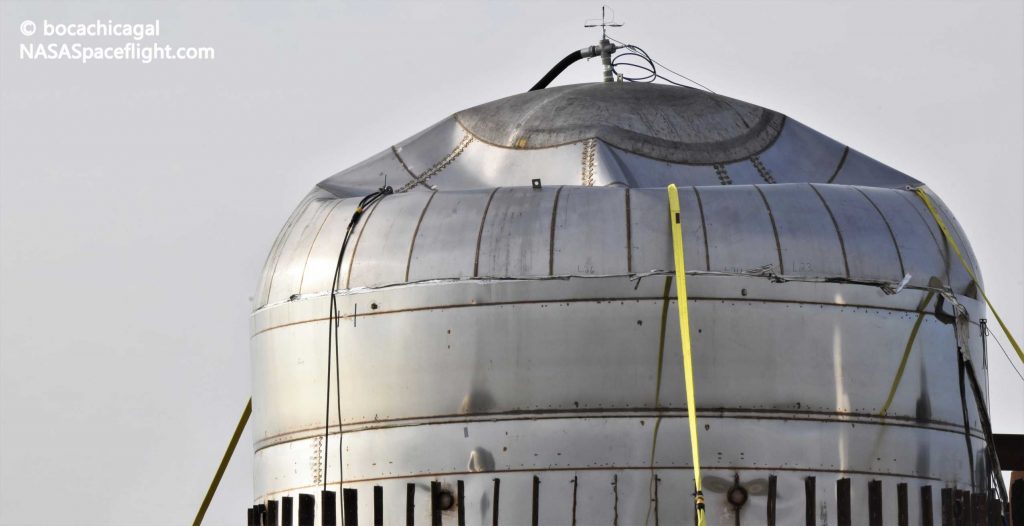
All things considered, it’s safe to assume that SpaceX is going to begin building and assembling Starship SN01 (formerly Mk3) hardware almost immediately. Given that this test tank took just 20 days to assemble, it’s safe to say that the upgraded prototype’s tank section could be completed in just a handful of weeks. Stay tuned for progress reports.
Check out Teslarati’s Marketplace! We offer Tesla accessories, including for the Tesla Cybertruck and Tesla Model 3.

Elon Musk
Elon Musk and Tesla try to save legacy automakers from Déjà vu
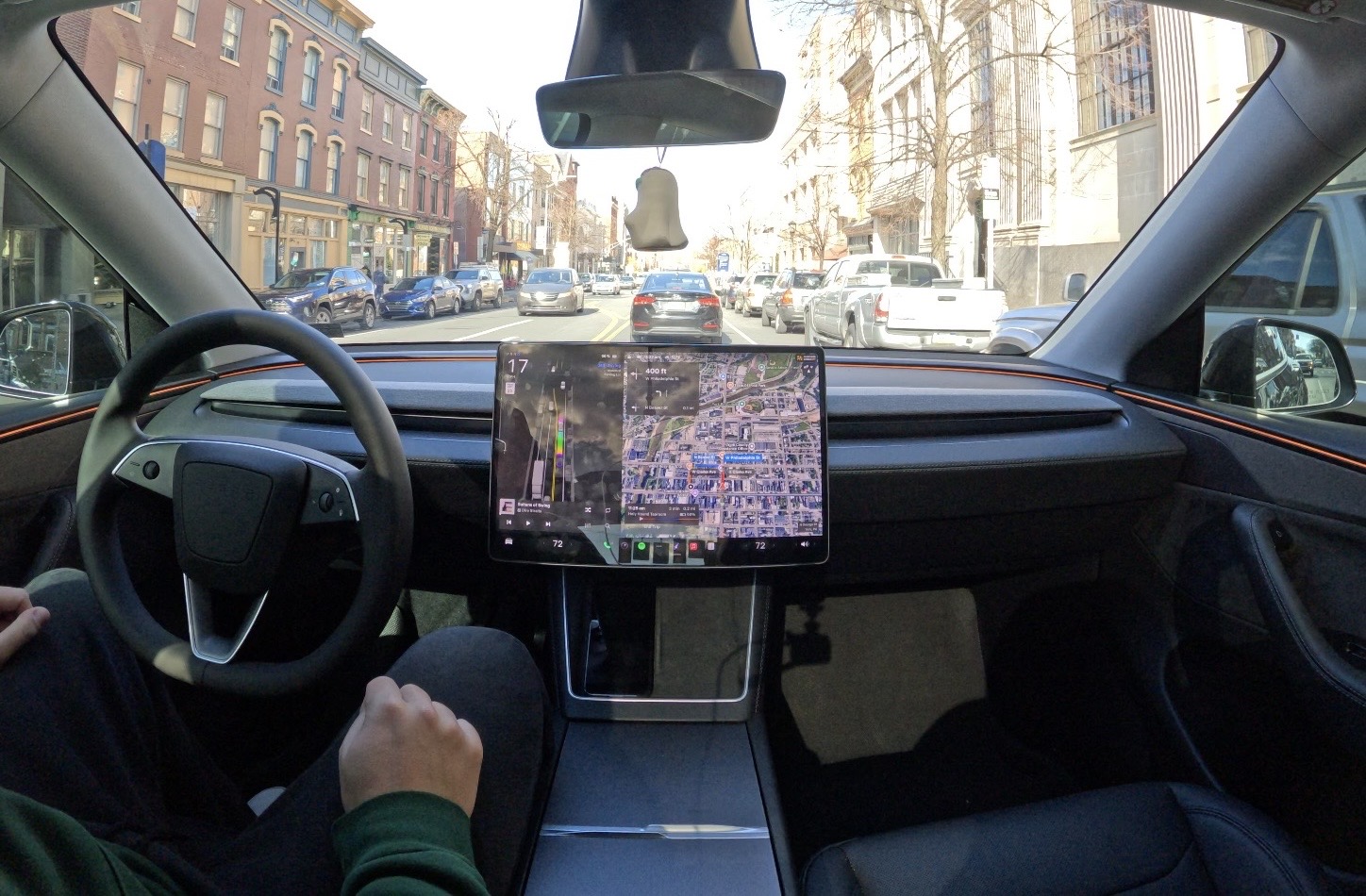
Elon Musk said in late November that he’s “tried to warn” legacy automakers and “even offered to license Tesla Full Self-Driving, but they don’t want it,” expressing frustration with companies that refuse to adopt the company’s suite, which will eventually be autonomous.
Tesla has long established itself as the leader in self-driving technology, especially in the United States. Although there are formidable competitors, Tesla’s FSD suite is the most robust and is not limited to certain areas or roadways. It operates anywhere and everywhere.
The company’s current position as the leader in self-driving tech is being ignored by legacy automakers, a parallel to what Tesla’s position was with EV development over a decade ago, which was also ignored by competitors.
The reluctance mirrors how legacy automakers initially dismissed EVs, only to scramble in catch-up mode years later–a pattern that highlights their historical underestimation of disruptive innovations from Tesla.
Elon Musk’s Self-Driving Licensing Attempts
Musk and Tesla have tried to push Full Self-Driving to other car companies, with no true suitors, despite ongoing conversations for years. Tesla’s FSD is aiming to become more robust through comprehensive data collection and a larger fleet, something the company has tried to establish through a subscription program, free trials, and other strategies.
Tesla CEO Elon Musk sends rivals dire warning about Full Self-Driving
However, competing companies have not wanted to license FSD for a handful of speculative reasons: competitive pride, regulatory concerns, high costs, or preference for in-house development.
Déjà vu All Over Again
Tesla tried to portray the importance of EVs long ago, as in the 2010s, executives from companies like Ford and GM downplayed the importance of sustainable powertrains as niche or unprofitable.
Musk once said in a 2014 interview that rivals woke up to electric powertrains when the Model S started to disrupt things and gained some market share. Things got really serious upon the launch of the Model 3 in 2017, as a mass-market vehicle was what Tesla was missing from its lineup.
This caused legacy companies to truly wake up; they were losing market share to Tesla’s new and exciting tech that offered less maintenance, a fresh take on passenger auto, and other advantages. They were late to the party, and although they have all launched vehicles of their own, they still lag in two major areas: sales and infrastructure, leaning on Tesla for the latter.
I’ve tried to warn them and even offered to license Tesla FSD, but they don’t want it! Crazy …
When legacy auto does occasionally reach out, they tepidly discuss implementing FSD for a tiny program in 5 years with unworkable requirements for Tesla, so pointless. 🤷♂️
🦕 🦕
— Elon Musk (@elonmusk) November 24, 2025
Musk’s past warnings have been plentiful. In 2017, he responded to critics who stated Tesla was chasing subsidies. He responded, “Few people know that we started Tesla when GM forcibly recalled all electric cars from customers in 2003 and then crushed them in a junkyard,” adding that “they would be doing nothing” on EVs without Tesla’s efforts.
Companies laughed off Tesla’s prowess with EVs, only to realize they had made a grave mistake later on.
It looks to be happening once again.
A Pattern of Underestimation
Both EVs and self-driving tech represent major paradigm shifts that legacy players view as threats to their established business models; it’s hard to change. However, these early push-aways from new tech only result in reactive strategies later on, usually resulting in what pains they are facing now.
Ford is scaling back its EV efforts, and GM’s projects are hurting. Although they both have in-house self-driving projects, they are falling well behind the progress of Tesla and even other competitors.
It is getting to a point where short-term risk will become a long-term setback, and they may have to rely on a company to pull them out of a tough situation later on, just as it did with Tesla and EV charging infrastructure.
Tesla has continued to innovate, while legacy automakers have lagged behind, and it has cost them dearly.
Implications and Future Outlook
Moving forward, Tesla’s progress will continue to accelerate, while a dismissive attitude by other companies will continue to penalize them, especially as time goes on. Falling further behind in self-driving could eventually lead to market share erosion, as autonomy could be a crucial part of vehicle marketing within the next few years.
Eventually, companies could be forced into joint partnerships as economic pressures mount. Some companies did this with EVs, but it has not resulted in very much.
Self-driving efforts are not only a strength for companies themselves, but they also contribute to other things, like affordability and safety.
Tesla has exhibited data that specifically shows its self-driving tech is safer than human drivers, most recently by a considerable margin. This would help with eliminating accidents and making roads safer.
Tesla’s new Safety Report shows Autopilot is nine times safer than humans
Additionally, competition in the market is a good thing, as it drives costs down and helps innovation continue on an upward trend.
Conclusion
The parallels are unmistakable: a decade ago, legacy automakers laughed off electric vehicles as toys for tree-huggers, crushed their own EV programs, and bet everything on the internal-combustion status quo–only to watch Tesla redefine the industry while they scrambled for billions in catch-up capital.
Today, the same companies are turning down repeated offers to license Tesla’s Full Self-Driving technology, insisting they can build better autonomy in-house, even as their own programs stumble through recalls, layoffs, and missed milestones. History is not merely rhyming; it is repeating almost note-for-note.
Elon Musk has spent twenty years warning that the auto industry’s bureaucratic inertia and short-term thinking will leave it stranded on the wrong side of technological revolutions. The question is no longer whether Tesla is ahead–it is whether the giants of Detroit, Stuttgart, and Toyota will finally listen before the next wave leaves them watching another leader pull away in the rear-view mirror.
This time, the stakes are not just market share; they are the very definition of what a car will be in the decades ahead.
News
Waymo driverless taxi drives directly into active LAPD standoff
No injuries occurred, and the passengers inside the vehicle were safely transported to their destination, as per a Waymo representative.
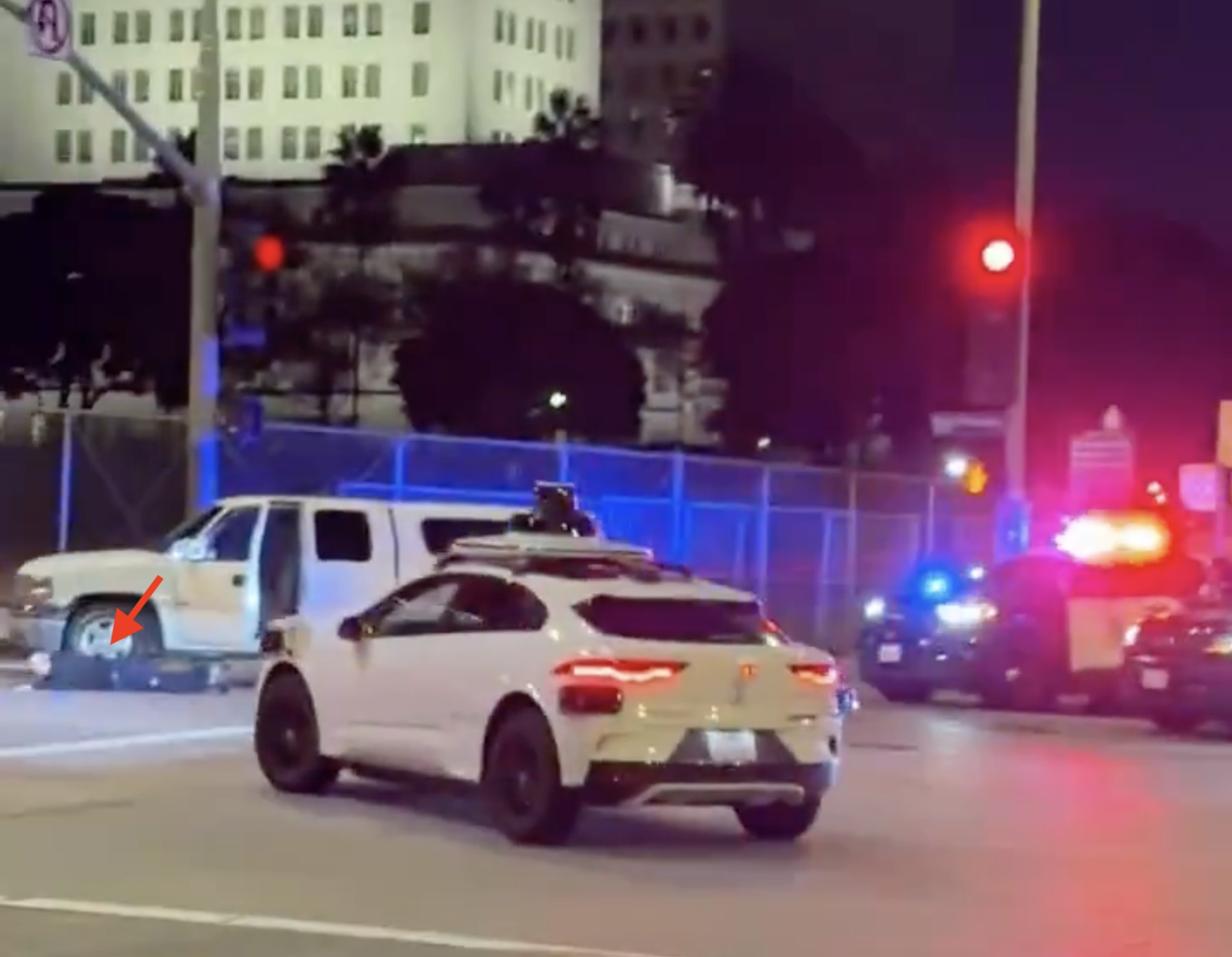
A video posted on social media has shown an occupied Waymo driverless taxi driving directly into the middle of an active LAPD standoff in downtown Los Angeles.
As could be seen in the short video, which was initially posted on Instagram by user Alex Choi, a Waymo driverless taxi drove directly into the middle of an active LAPD standoff in downtown Los Angeles.
The driverless taxi made an unprotected left turn despite what appeared to be a red light, briefly entering a police perimeter. At the time, officers seemed to be giving commands to a prone suspect on the ground, who looked quite surprised at the sudden presence of the driverless vehicle.
People on the sidewalk, including the person who was filming the video, could be heard chuckling at the Waymo’s strange behavior.
The Waymo reportedly cleared the area within seconds. No injuries occurred, and the passengers inside the vehicle were safely transported to their destination, as per a Waymo representative. Still, the video spread across social media, with numerous netizens poking fun at the gaffe.
Others also pointed out that such a gaffe would have resulted in widespread controversy had the vehicle involved been a Tesla on FSD. Tesla is constantly under scrutiny, with TSLA shorts and similar groups actively trying to put down the company’s FSD program.
A Tesla on FSD or Robotaxi accidentally driving into an active police standoff would likely cause lawsuits, nonstop media coverage, and calls for a worldwide ban, at the least.
This was one of the reasons why even minor traffic infractions committed by the company’s Robotaxis during their initial rollout in Austin received nationwide media attention. This particular Waymo incident, however, will likely not receive as much coverage.
News
Tesla Model Y demand in China is through the roof, new delivery dates show
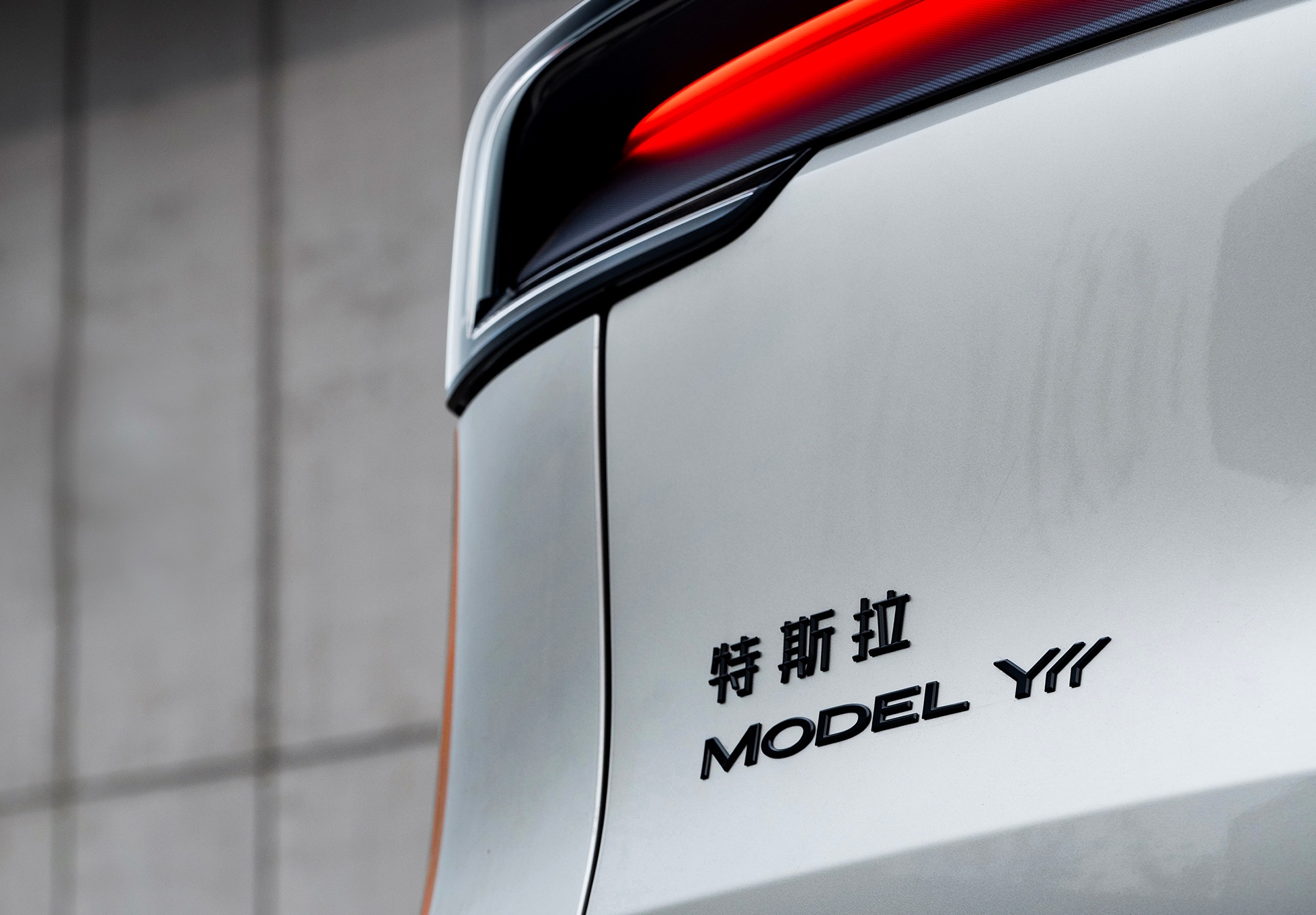
Tesla Model Y demand in China is through the roof, and new delivery dates show the company has already sold out its allocation of the all-electric crossover for 2025.
The Model Y has been the most popular vehicle in the world in both of the last two years, outpacing incredibly popular vehicles like the Toyota RAV 4. In China, the EV market is substantially more saturated, with more competitors than in any other market.
However, Tesla has been kind to the Chinese market, as it has launched trim levels for the Model Y in the country that are not available anywhere else. Demand has been strong for the Model Y in China; it ranks in the top 5 of all EVs in the country, trailing the BYD Seagull, Wuling Hongguang Mini EV, and the Geely Galaxy Xingyuan.
The other three models ahead of the Model Y are priced substantially lower.
Tesla is still dealing with strong demand for the Model Y, and the company is now pushing delivery dates to early 2026, meaning the vehicle is sold out for the year:
NEWS: New orders for all four Tesla Model Y trims in China are now officially sold out for 2025, as the factory’s remaining production capacity for the year has been fully allocated.
Estimated delivery dates for new orders now show January-February 2026. pic.twitter.com/Dfnu7yY58N
— Sawyer Merritt (@SawyerMerritt) December 1, 2025
Tesla experienced a 9.9 percent year-over-year rise in its China-made EV sales for November, meaning there is some serious potential for the automaker moving into next year despite increased competition.
There have been a lot of questions surrounding how Tesla would perform globally with more competition, but it seems to have a good grasp of various markets because of its vehicles, its charging infrastructure, and its Full Self-Driving (FSD) suite, which has been expanding to more countries as of late.
Tesla Model Y is still China’s best-selling premium EV through October
Tesla holds a dominating lead in the United States with EV registrations, and performs incredibly well in several European countries.
With demand in China looking strong, it will be interesting to see how the company ends the year in terms of global deliveries.








